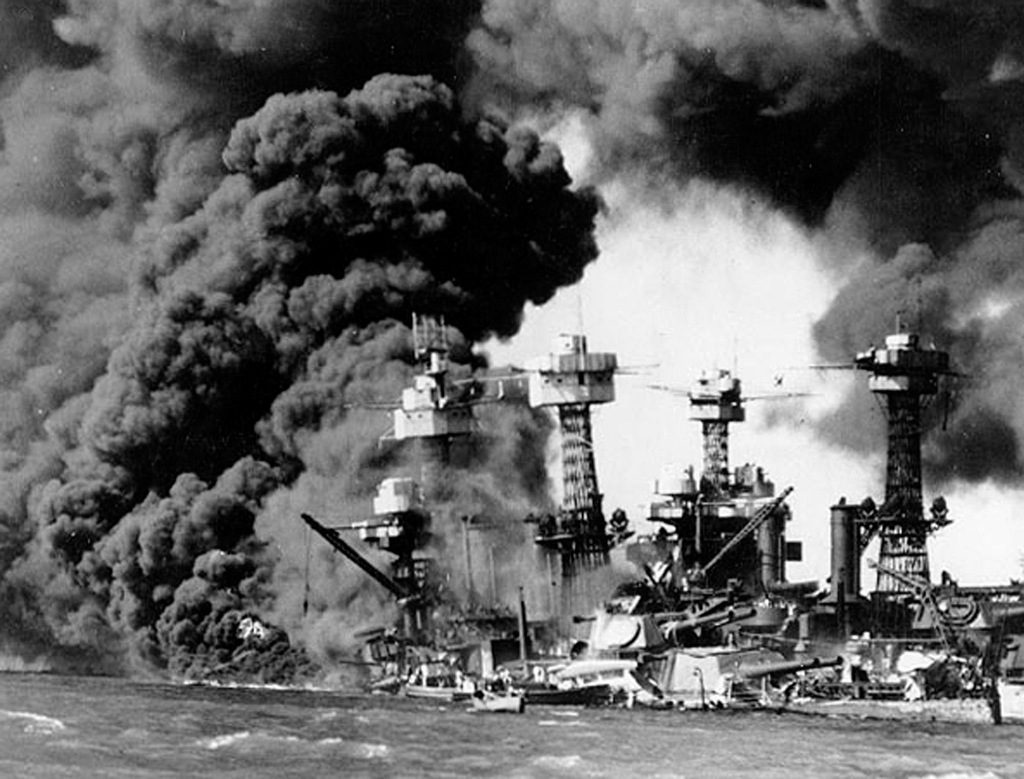
In 1941 the world was at war: all of Europe, Russia, China and the Middle East were engaged in what was to become the most destructive war in the history of mankind. Only one major power was still on the sidelines: the United States – until, of course, December 7, 1941.
The Calais Advertiser of December 10, 1941 reported on the attack on Pearl Harbor as follows:
This nation was electrified on Sunday when radio broadcasts announced that Japanese planes had, in a surprise attack, bombed Manila, Honolulu, Pearl Harbor and Hickman Field, Hawaii, without warning.
In this raid the casualty list was placed at 3,000. A statement listed these American losses: About 1,500 dead and an equal number wounded on the island of Oahu (Hawaii). Some of these presumably were citizens but it was indicated the overwhelming majority were Army and Navy personnel.
One battleship, described as an old one capsized; a destroyer blown up; several other small ships damaged seriously, and a large number of planes put out of commission. 200 Marines in China captured and interned.
It was said that irrespective of the conflicting claims. it was apparent that the audacious Japanese attacks had been carried out with a success which shocked many in high places in the capital.
The casualty figure of 3,000 was not far off the mark but the account of the damage to the fleet was pure fiction (“one old battleship capsized; a destroyer blown up”). In fact, 20 major ships were damaged or destroyed including eight battleships, the port was devastated as was much of Hickam Field airbase and 300 of its aircraft. It is not that the Advertiser was ill-informed, the paper like the rest of the country was misinformed. Truth indeed is the first casualty of war and censorship allowed the government to downplay the true extent of U.S. losses on the not unsupportable theory that we did not want our friends or our enemies to know how badly the attack had diminished our naval power in the Pacifi
The same day the Calais Advertiser published an account of local boys who were in the Pacific Theater together with a scathing comment on Charles Lindbergh’s “America Firsters”:
The tragic news of the treacherous attack by the Japanese on the U. S. A. fell with a sickening force among us Sunday especially those who have loved ones serving in the armed forces and more especially to those whose sons and brothers are stationed at Pacific bases where the first blows of the struggle are falling.
Several local boys are in the Philippines and Hawaii but we have been unable to learn that any news regarding them has been received here as yet. Bert Mowatt, Curly Kent, Malcolm Foster, a Logan boy, Charlie Carver, and doubtless there are others who are in the war struck areas. Val Lauridsen, contrary to reports, is not in Hawaii. He is, as far as we know, at a base camp in Virginia. Well the worry and suspense is over. We’re in it now and the America Firsters, Isolationists and all kindred ilk can pick up their things and go home—their part in the game is all over. This is a war we didn’t ask for and didn’t want but it has been dumped right in our laps, and we’ll have to see it through to the finish. Let’s hope that this time we won’t stop short of Berlin.
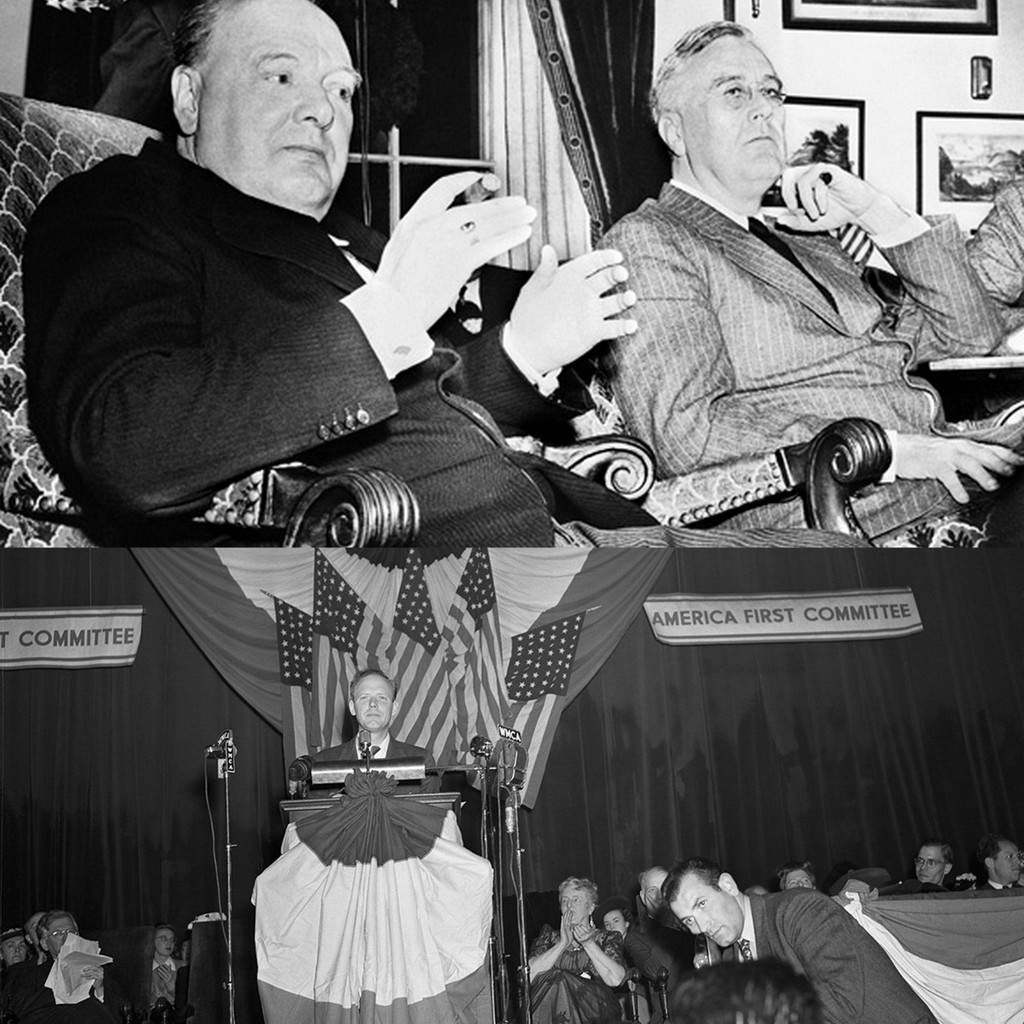
It’s hard to know how long we would have stayed technically neutral had we not been attacked by Japan. The U.S. was deeply isolationist, a majority of Americans felt it had been a great mistake to have been involved in the Great War and many were not anxious to repeat that “mistake”. However, FDR understood from the beginning that we had no choice but to support the Allies materially and eventually with combat troops and he very astutely began molding public opinion to accept the inevitability of our involvement. In Calais and the surrounding towns, he had little problem finding support for our entry into war. The war was already very close to home. Dozens of local boys had joined the Canadian forces in direct violation of the Neutrality Acts passed by an isolationist Congress. A Calais boy Durrell McFarlane, a Royal Canadian Air Force pilot, already had a German supply ship to his credit and after being wounded in a dog fight over the English Channel had nursed his damaged plane back to England. Popular boys from St Stephen had died in combat and there were few people in the St. Croix Valley who didn’t have a friend or relative from across the border. Republicans in Congress, egged on by Charles Lindbergh’s “America First” movement, had made it nearly impossible to prepare for America’s inevitable involvement in the war. This was especially true after the British Forces suffered one defeat after another in 1941.
In April of 1941, after Greece fell to the Nazis, the Calais Advertiser reported the following exchange between Roosevelt and Lindbergh:
In this country the reaction to the loss of the Greek Campaign was sharp.
The forces of the isolationists immediately took to the air, held a giant mass meeting in New York which was marked by violence outside the hall and paced by Charles Lindbergh took an “I told you so” attitude, urging the nation to believe the British defeat of the Nazis was not only impossible but the British loss of the war was a certainty and if America gave “all-out” aid to Britain that we too, would suffer through this defeat.
President Roosevelt, frankly infuriated by this attitude and these utterances had Secretary Hull and Secretary Knox take to the radio and prepare the way for a statement by the President which ripped the “defeatists” up the back and made it plain that the government would have none of this attitude.
The Administration they said was frankly committed to “all-out” aid and would go its way toward this goal. Instead of retrenching on this policy, as urged by the Lindbergh coterie, it was boldly announced that the government would extend its aid still more vigorously.
Singling out Lindbergh especially for Administration ire, the President, in the press conference characterized him as an “appeaser” and a “defeatist and used the word “copperhead” in making a comparison with earlier days in American history.
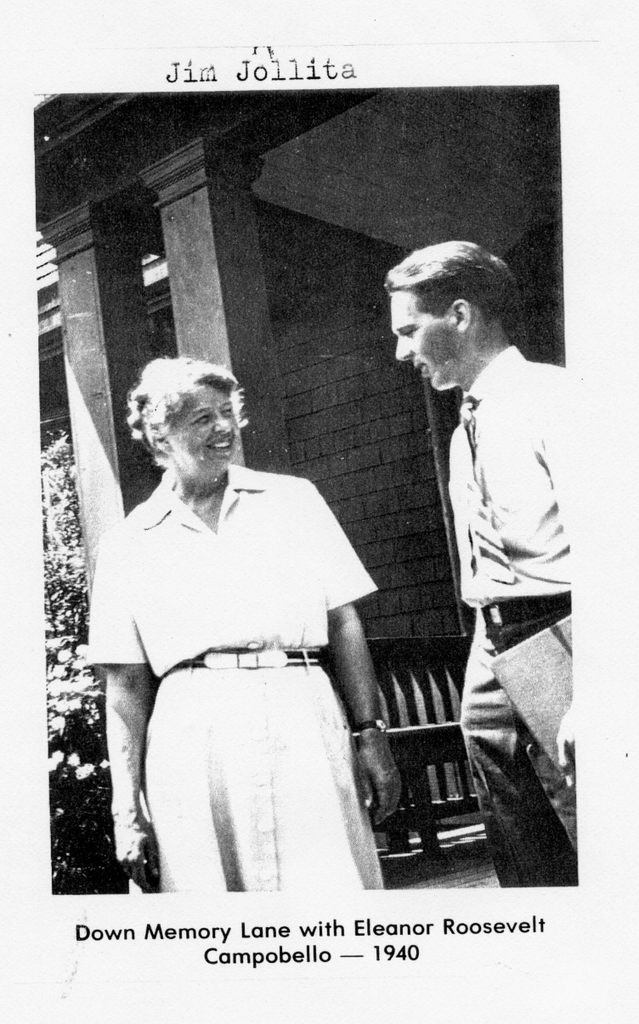
Downeast Maine had a local connection to the tumult and drama playing out in Washington that summer in the person of Eleanor Roosevelt who spent several weeks on Campobello in the summer of 1941. She wrote a nationally syndicated newspaper column titled “My Day” and her columns from Eastport during the summer of 1941 described her travels Downeast, shopping trips to Eastport, St. Andrews and other local towns. Eleanor Roosevelt however did not confine her columns to travelogues and accounts of the many distinguished visitors who visited her on Campobello. She was a very effective spokesperson for her husband and did not shrink from controversy. This, of course, enraged her husband’s political opponents who felt a First Lady should confine herself to dusting the White House china. Eleanor was no china duster. Nor did she shrink from offering her husband advice on policy matters which he took very seriously.
My Day Eleanor Roosevelt June 27, 1941:
MY DAY
U.S. help to Allies may keep conflict from the Americas by Eleanor Roosevelt
Eastport, Maine.
A man in Brooklyn, N. Y., sends me a clipping containing a few words I had said about our responsibility, as a nation, to the world, and comments on it in a little rhyme about “looking out for number one, before anything has begun.”
He thinks we “haven’t plenty to spare” and can’t “send it all over there.” It does seem to me that the gentleman misses the point. If we bend every effort now to procure necessary material help for those who are doing the fighting in a cause which we believe in, we will keep the war from our shores. If Britain, China and Russia lose we will have to fight.
No matter how well we prepare 175,000,000 in this hemisphere will have quite a struggle, first on the economic side, then on the military side. We shall be pitted against 500,000,000 in Europe and Japan and heaven knows how many more if Russia is not able to hold out. I don’t want war, but I think that every effort we can put into production and military preparation to aid those fighting Hitler is our best guarantee against war; and our only safety, should it come.
In her many “My Day” columns from Eastport, Mrs. Roosevelt described on her excursions around the bay, the spectacular sunsets at Campobello, the cool temperatures when compared the brutal heat of a Washington summer, shopping in Eastport, St. Andrews, Quoddy Village and other localities. To get to St Andrews she drove from Eastport to Robbinston and took the Robbinston-St. Andrews ferry across to Canada.
It may have been in 1941 that she tried unsuccessfully to pull rank on the U.S Customs Inspector in Robbinston. The Robbinston ferry was a scow with a capacity of about four cars, and some foot passengers. It was pushed along by a converted sardine boat. Eleanor was an occasional passenger, riding in her black touring car with icing-glass windows and the chauffeur sitting up front. There is a story about the time a new U.S. Customs man requested to inspect the car. She said “Sir, I am Mrs. Roosevelt.” He replied: “Madame, I am a United States Customs Officer, and I will inspect your car.” She complied, and he became famous locally.
Even before the Japanese attacked Pearl Harbor in December of 1941, the American public had begun to swing to Roosevelt’s view that we could not avoid involvement in the war. Lindbergh’s “America First” movement was a much diminished force. In September Lindbergh gave a speech claiming the British, Jews and Roosevelt were “war agitators” who use propaganda to frighten the American people into going to war. Many attendees openly displayed Nazi symbols. The public had seen enough to realize “America First” was un-American. After Pearl Harbor many America Firsters forgot their anti-war sentiments and enlisted.
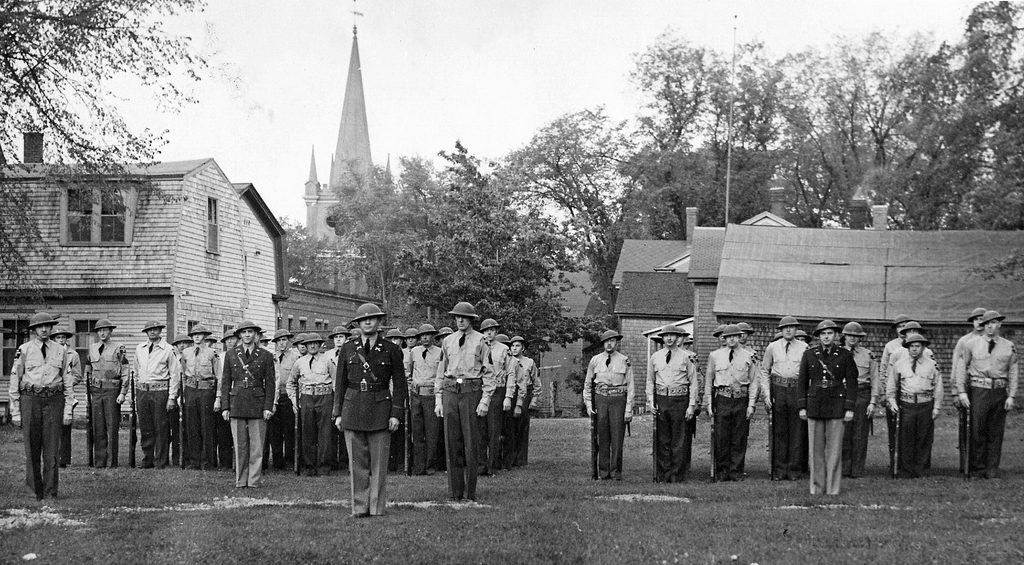
Local men, many veterans of the Great War, had known all along that we would soon be at war and formed Home Guard units, drilling a couple of times a week. The State appropriated funds to buy equipment for the units. The commander of the unit was E.R. Miles ably assisted by veterans Percy Fox, Phil Beckett and Chris Neilsen. Percy was a decorated hero of the Great war and became a decorated hero of the Second World War. FDR had managed to convince the Congress, by a margin of 1 vote, to institute a draft. The first Calais boy drafted was Mike Casey. Also in the first group of Calais men to enter the Army was Ken Kallenberg. He took the train out of Machias and ended his journey in Fort Wheeler Georgia. In a letter home he described Fort Wheeler as “a swell place with barracks and grounds clean and attractive. The officers were regular fellows and the food was excellent.” Ken was one of the finest athletes Calais has ever seen. He was a phenom as a pitcher and widely recruited by professional teams. Sadly, the war interrupted his career and he was wounded in combat three times in the Pacific. After the war he pitched in the minors for a couple of years but was never able to overcome the toll the war had taken on his body.
Louis Morrison and Murray Tingley were working at the A and P store across from the St. Croix Hotel in 1941. Before the opening of the “Supermarket” there were four “neighborhood” A and P’s in Calais. Louis says only his store and the Washington St. store survived the opening of the “supermarket” and only because they were service stores. Many people objected to the idea of pushing a grocery cart around the new supermarket, they wanted the clerks to fetch, carry and bag their groceries from a list they so kindly provided. One evening in 1941 when Louis and Murray were locking up the store, they were approached by a couple of strangers who said “OK boys, we’ll take the keys.” This was the only notice they had that the store was closing but, as Louis says, it really didn’t matter. He and Murray were immediately offered full time employment by Uncle Sam.
Of course there was much going on nationally and locally other than the war in 1941, after all the United States was not a combatant until December.
Nationally
in February 1941, 10 months before Pearl Harbor, Navy Admiral Martin Bellinger had been asked to assess the U.S. defenses
in the Pacific. His conclusions:
In a section titled “Possible Enemy Action,” the report stated that a declaration of war might actually be preceded by a surprise submarine attack on ships and installations at Pearl Harbor. “It appears that the most likely and dangerous form of attack on Oahu would be an air attack,” the report continued. “It is believed at present such an attack would most likely be launched from one or more carriers which would probably approach inside of 300 miles. Any single submarine attack might indicate the presence of a considerable undiscovered surface force probably composed of fast ships accompanied by a carrier.” In “Summary of the Situation,” General Martin and Admiral Bellinger warned, “A successful, sudden raid against our ships and Naval installations on Oahu might prevent effective offensive action by our forces in the Western Pacific for a long period….”
It’s almost as if the Japanese High Command had read the report and decided it was such a good plan they would follow it to the letter. In sports Ted Williams was hitting .308 at the end of May and finished the season with a .401 average. It goes without saying his last few months of the season were spectacular but not good enough to win the MVP. That went to Joe DiMaggio who had a 56 game hitting streak. In entertainment Glen Miller recorded “Chattanooga Choo Choo” and Jimmy Stewart and Ginger Rogers won Academy Awards for Rebecca.
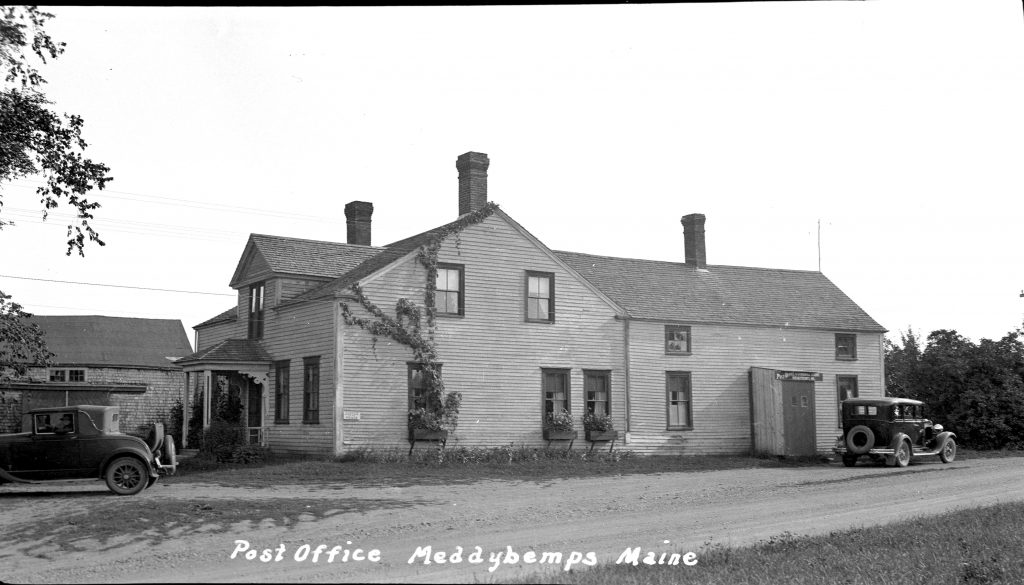
Locally Meddybemps made the news in distant Montana and other far away places when every member of the community bought a National Defense Bond at the Meddybemps Post Office. The articles say the Postmaster was C.H. Bridges, the C being Cassius we believe but it was his wife Gladys who ran the Post Office from 1939 to 1951.
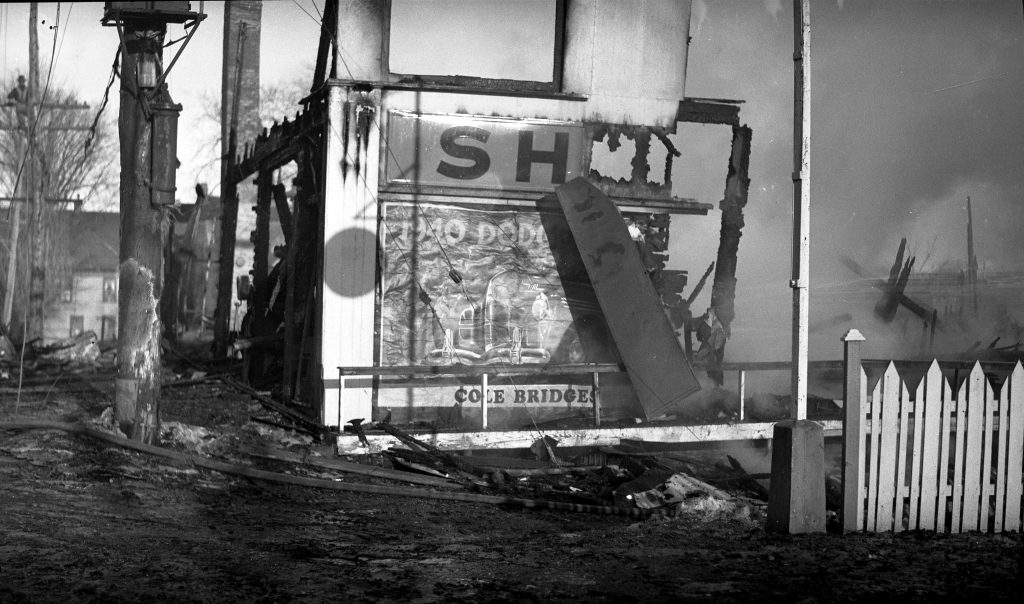
Cole Bridges’ garage on Main Street burned again, one in a series of fires that plagued this business. Dr. Gordon Sears graduated from St. Stephen High School. Mr. Ganong of Ganong’s Chocolates, suffering from a shortage of nuts for their candies, offered to pay locals 35 cents a pound for beech nuts. “Whole areas, he said, in this county are covered with beech trees and the crop of nuts this year is very abundant.” Eastport had its best sardine pack since the First World War and the Advertiser reported on April 30, 1941 that “On Monday Calais received a distinguished visitor, no less a personage than King Cole, self-styled leader of American Hoboes” The King was on his way to Canada. National newspapers also reported this bit of trivia – “The longest telephone call within the United States would be from Eastport, Maine to Bay City California, a distance of 2,910 airline miles.
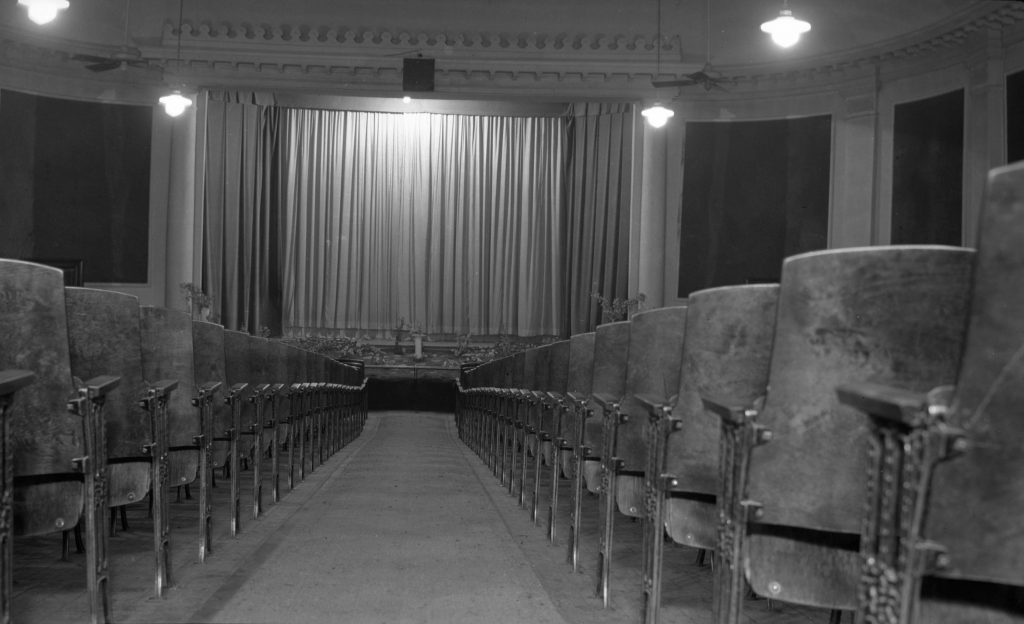
The citizens of Calais voted 1085-1042 to approve the showing of Sunday movies after the proposal had been rejected the previous year by 700 votes. The papers opined that the opponents of the proposal had used unnecessarily inflammatory tactics in the 1941 campaign.
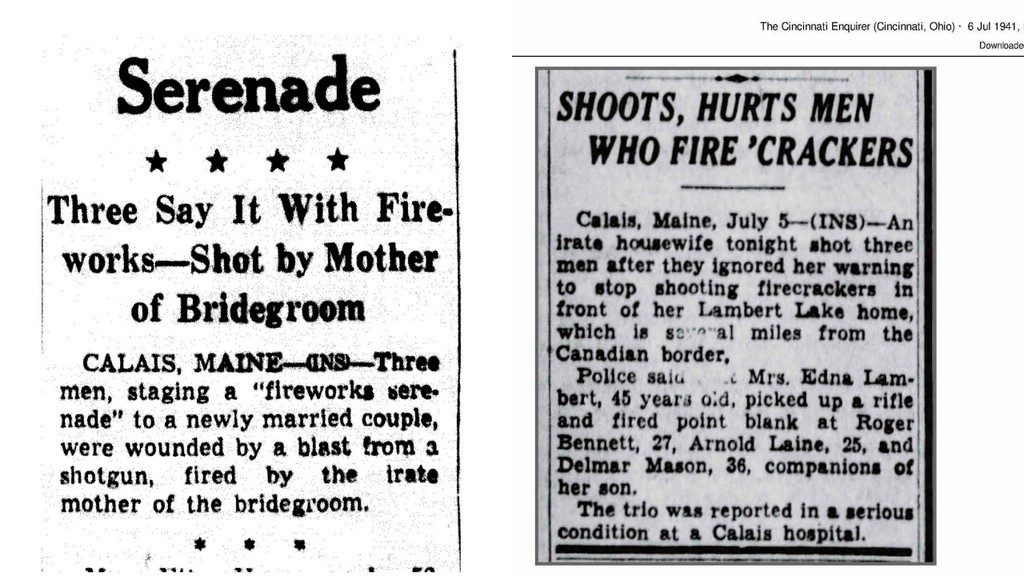
In the 40s the Union Street section of Calais retained its reputation as a rough place but it couldn’t hold a candle to Lambert Lake. Try as we might we could not determine what happened to Edna or her victims.
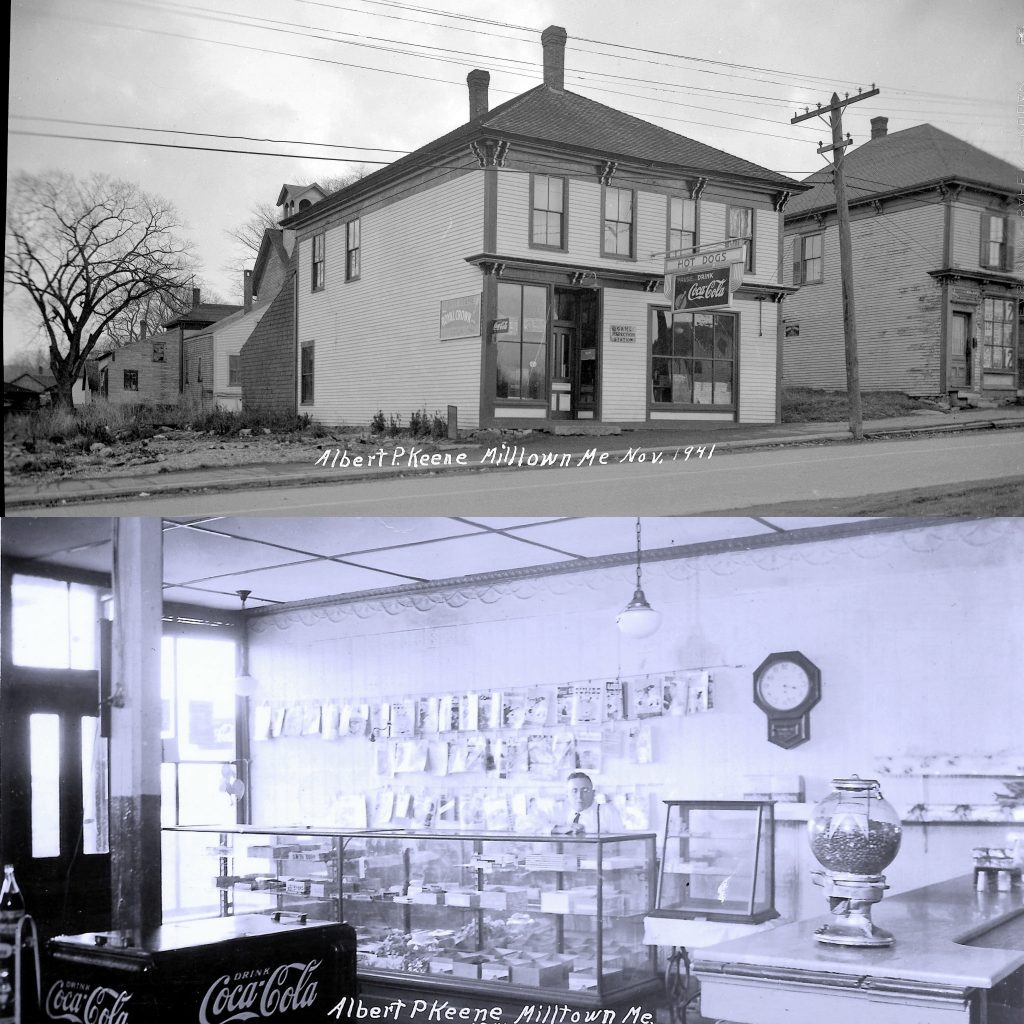
For the Milltown folks we include this photo of Albert Keene’s Store in Milltown in 1941. Albert was the moving force behind the Milltown Honor Roll to honor those who served in the war. It stood for decades at the intersection of North and South Streets in Milltown but has since disappeared without a trace. No one seems to know when or why it was removed.
We’ll end 1941 with this request for information by Dr. Walter Miner of Calais on behalf of the Calais Chamber of Commerce to its counterpart in Kissimmee, Florida. We remain puzzled why the Calais Chamber needed this information
From the Tampa Bay Tribune 27 May 1941:
Those Were Cows!
Doubtful of the size of Florida cows, W.N. Miner, President of the Chamber of Commerce of Calais, Maine, wrote to Kissimmee, the Gazette reports:
“Neighbors of ours inform me that you have cows there that span 14 feet between horns, also pineapples which you cut up with a crosscut saw.” The Maine man inquired if that was correct. So H. B. Jones, Secretary of the Kissimmee C. of C. wrote him that the visitor must have meant 14 feet between horn tips, because a cow with a head 14 feet wide between the bases of horns would have to be a cow about 40 feet high. Such large cows are no longer common on the Kissimmee prairie, Mr. Jones replied, as “the efforts of Florida breeders for the past 30 years have been toward the end of making blockier, stockier, smaller and heavier cattle. It is with a great deal of modesty that I state that the average horn length of our native Florida stock does amount to 14 feet, but some will go up to 21 or 22 feet.” Such cattle hardly rate as long-horns. We remember when the first telephone line was put across Lee County, up the Caloosahatchee. The telephone poles were set up about the same distance apart as telephone poles are set nowadays. But the cattle owners complained because this telephone line amounted to a fence. The cows had such wide-spreading horns could not pass between two telephone poles to go down to the river to drink.
